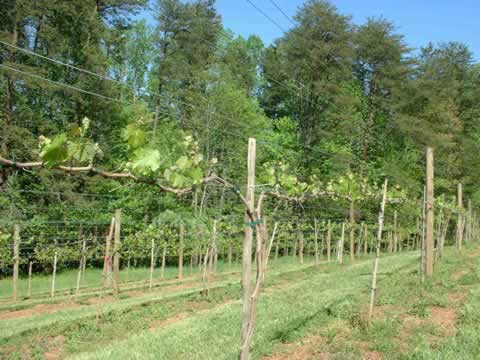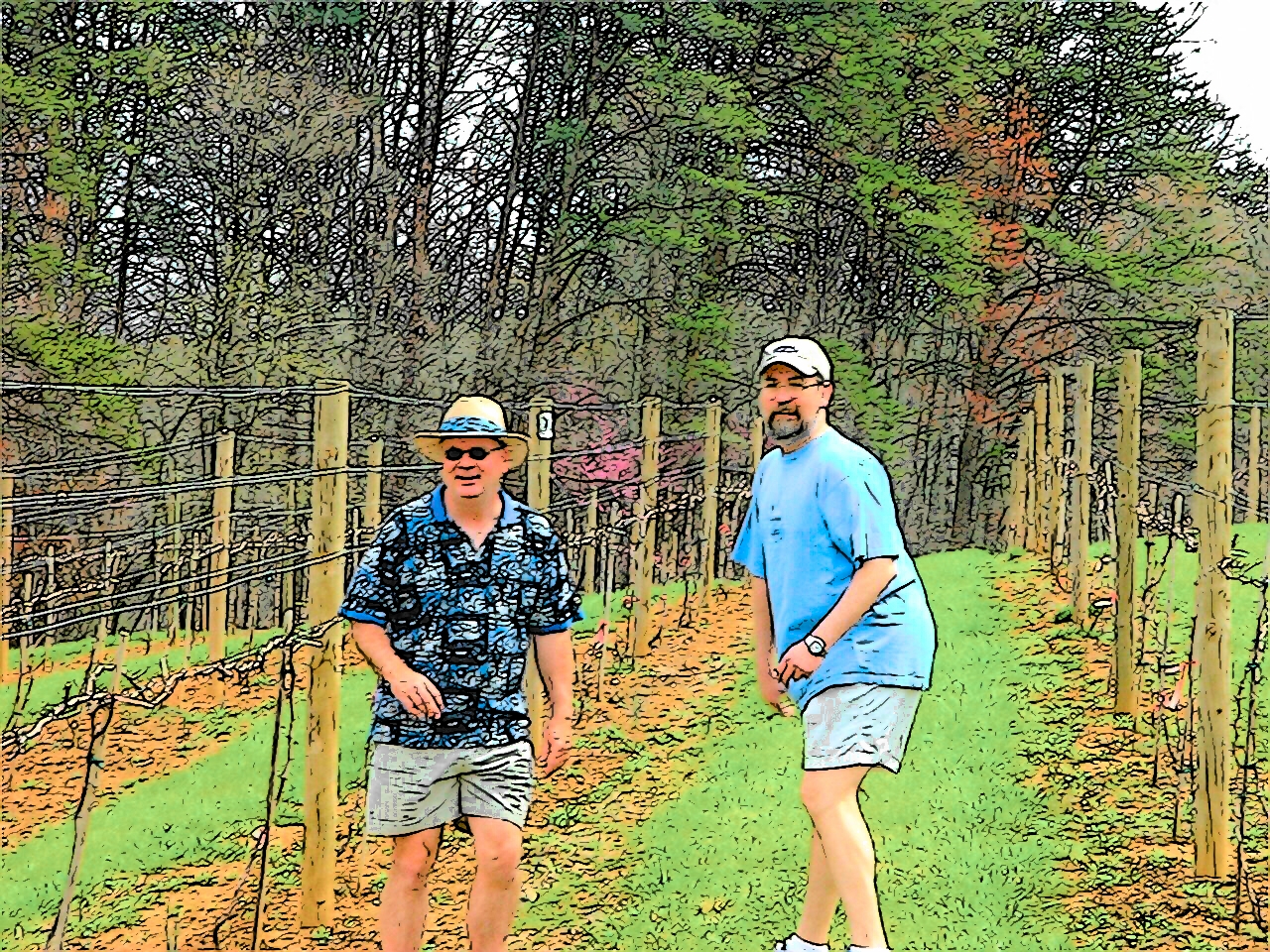|
How the FULKLANDS of Stokes County came to be. -------------------------------------------------------------------------------- The Heritage of Stokes County North Carolina, Published By The Stokes County Historical Society, John R. Woodard, Chairman/Editor, The Book Committee FULK (VOLCK) FAMILY 468 Andreas Volck, born about 1678 in Germany, a vinedresser, came to America in 1708 with the Reverend Joshua Kocherthal. .... The Fulk family of Stokes County descends from Andreas Volck from Baden, German-French border of the Rhineland.
The Kochertal Party During the Seven-Years War (1641-1648) the Germans living in the Palatinate or Pfalz area west of the Rhine were frequently raided by King Louis XIV’s armies who plundered the peasants and collected tribute from the local ruling Electors. In 1674 this area was again thoroughly devastated by Louis XIV’s armies under Marshal Turenne. In 1688-89 Louis sent Marshal Montclas with 50,000 men “that the Palatinate should be made a desert.” This Commander gave the nearly one-half million inhabitants three days notice that they must leave their homes. Many died of cold and hunger. The former farmers and shopkeepers who survived became beggars on the streets of European cities. In 1707 yet another French army under the leadership of Marshal Villars came to invade, pillage and destroy this area again. His army occupied the Palatinate for a year, sending plundered money and goods back to enlarge King Louis XIV’s treasury. William Penn of England had made two trips through the Palatinate trying to persuade the Palatines to go to his new colony, the Province of Pennsylvania. Labor was very scarce and expensive at that time in the Colonies. Penn promised these Protestants they could become naturalized, practice their religion, purchase land and engage in trade. Families and neighborhood groups began secret discussions about emigrating from the Palatinate. The Rev. Josua Harrsch (von Kochertal/from the Kochertal region), an Evangelical Lutheran pastor in the three-point charge of Eschelbronn, Mönchzell and Daisbach, between Heidelberg and Sinsheim in the Northern Kraichgau area of Baden, Germany, had made a trip to England in 1706 to acquaint himself with conditions for settlement in the English Colonies. When he returned he wrote a widely-circulated booklet emphasizing the attractive possibilities in America. Under his leadership in 1708 sixty-one persons, poor Lutherans from the Landau area, mostly vinedressers who had been impoverished by the occupation of the French army, secretly left their homes and began the journey to Frankfurt am Main, hoping to gain assistance there from an English government representative. When they reached Frankfurt, they found that they would receive no assistance there, so in March 1708 Rev. Harrsch and forty-one Palatines continued their journey to seek help from “good Queen Anne” of England. In London, through his efforts, plans were approved to send them to the Hudson River Valley in the Province of New York. Queen Anne granted them naturalization without a fee, free transportation to New York, 500 acres of land for a church and its support (a glebe), 50 acres of land for each person, money for tools and the first year’s support. In addition to Harrsch and his family (who assumed the name Kochertal), the other original heads of families, hereinafter called the Kochertal Party, were Lorenz Schwisser/Schweitzer, Melchior Gülch, Henry Rennau, Andreas Volck, Michael Weigand, Jacob Webber, Jacob Pletel, Johannes Fiscar/Fischer, single men: Isaac Türck and ___ Hennicke, totaling forty-one persons. Fourteen more families were added in London: those of Isaac Feber/Faber, Daniel Fiere, Peter Roos/Rose, widower Peter Hübertsen and son, Peter Wemar’s widow and daughter and bachelor Herman Schüneman, in all fifty-five persons which included wives and children. In October 1708 they left England with the newly-appointed Governor Lovelace on the Ship Globe, arrived at New York harbor, then sailed up the Hudson River, disembarking on New Year’s Day, 1 January 1709 at the mouth of Quassaick Creek, on the west side of the Hudson River, about sixty miles north of New York City near present-day Newburgh. The Kochertal Party was the first group of German Palatines to arrive in New York and had several advantages over those who came later in 1709-10. From the time of their arrival the Kochertal Party members established themselves on farms on the west side of the Hudson River near Newburgh, even though the land was not patented to them until 1719 under the German Patent of Newburgh. Here they built homes and a small log church. But their farms, mostly stony, rocky hillsides, proved to be unproductive and by 1751 all but one Palatine descendant had left. The 500 acres of land that had been designated for the support of the Lutheran Church were taken over by the Anglican Church after a bitter court battle. ... On 20 February 1722 Jacob sold some of his New York land to John Fischer (his next-door neighbor on Lot # 8) and on 5 August 1724 he sold the remainder, Lot #7 in the “German Patent,” to Zacharias Hoffman. Andreas Volck had also sold his Lot # 9 to Zacharias Hoffman before he left for Pennsylvania in 1723. In the spring of 1723 Conrad Weiser with a group of settlers from Schoharie cut a road to the Susquehanna River, made canoes and floated down the river until they reached Swatara Creek, then went overland to Tulpehocken, west of Reading in Philadelphia/Berks County. Andreas Volck accompanied Weiser to Tulpehocken and this may be the route Jacob Weber and his family took in the late summer of 1724 to join Volck in Pennsylvania. On a list of heads of households and single freemen residing in the Oley Valley in 1701-1741, by 1723 Andreas “Fulk” had settled on Lot A12 in the 10,000 acre “Swede’s Tract” on the Schuylkill River near Manatawney Creek in Amity Township and by 1724 Jacob Weber/Weaver was on Lot A10. A 1734 tax list of landholders in Amity Township, Philadelphia Co. included Jacob Weaver who owned 110 acres. Amity Township was in northern Oley Valley, part of Philadelphia County until 1752 when it became the southern part of newly-formed Berks County. The surnames, “Fulk” and “Foulk” anglicized from “Volck,” and “Weaver” the English translation for “Weber,” used by their descendants date from this time and place. ... The Fulk family of Stokes County descends from Andreas Volck from Baden, German-French border of the Rhineland Copyright 2003 Barbara (Boring) Bauer. Published with permission. |
|
vine•dress•er Pronunciation: (vIn'dres"ur),
[key] —n. The Pruning Of The Vinedresser
"From Me
is thy fruit found."
|
 |
|
Randy Fulk of Stokes County continues Andreas Volck vinedresser tradition. Randy Fulk is a renaissance farmer and Americana singer-songwriter. After the last crop was harvested in 1999, Randy converted his family's third generation tobacco farm into a Cabernet Sauvignon and Chardonnay vineyard. From the age of eight, Randy worked with his family on the tobacco farm. However, during harvest celebrations and Saturday nights he played guitar and accompanied his Aunt Bessie on banjo and Uncle Joe on fiddle playing old time ballads. Like most teenage boys in the 70's he formed a rock band that played Rolling Stone covers, but it was his high school English teacher who first recognized his poetic talent and encouraged Randy to write. Inspired by this recognition, Randy wrote lyrics on any slip of paper using his work time on the farm to observe nature as fodder for his songs. Randy released his first solo acoustic album of 10 original songs, Misplaced Passion in 1992. Seven years later in 1999, to obtain the flexibility to pursue his music, Randy quit his day job to become degreed in the management of vineyards and to plant his own. Today, Randy consults with local growers and teaches viticulture part-time at a local community college. However, right after the vineyard was planted, in the spring of 1999, during a traditional "Blessing of the Vines" the best surprise of all happened. Randy's second cousins Matt, 21 and Eli, 16 years old jammed with him on electric bass and drums, putting a new twist on the old songs, spanning yet another generation. Randy liked what he heard and soon he taught them his next batch of songs. A renaissance occurred. The circle remained unbroken between the family farm and his music. Randy rediscovered his muse and recorded Empty Spaces in the fall of 2004. The juxtaposition between the old music with the modern sound along with the transformation of the grapes from the old farm into new wine, blended together to create a new world of possibilities for Randy. The unlikely combination of these generations produced a pure, cohesive sound. Produced by Grammy-nominated Mark Williams, the disc features 13 new original songs. Delivered in a simple, unaffected manner the album shines a ray of light into the darkest of human nights- an eternal belief in the second chance of tomorrow's rising sun.
Follow your dreams. Live life. At least those wonderful/blasted French are not attacking us and we do not have to leave our homeland as Andreas Volck did. We just drink French wines and grow their grapes of Chardonnay, Cabernet Sauvignon and Cabernet Franc. I guess we need to plant some German vines. Riesling and apple pie anyone? Cheers! Randy and Vivian |

